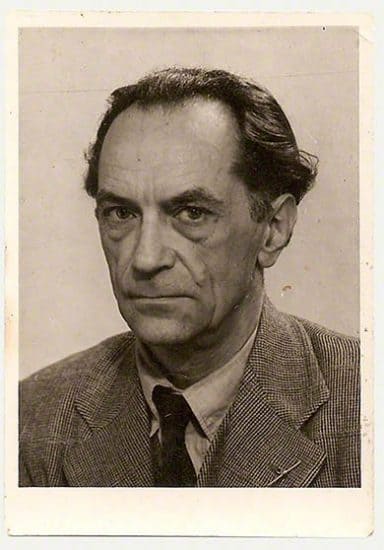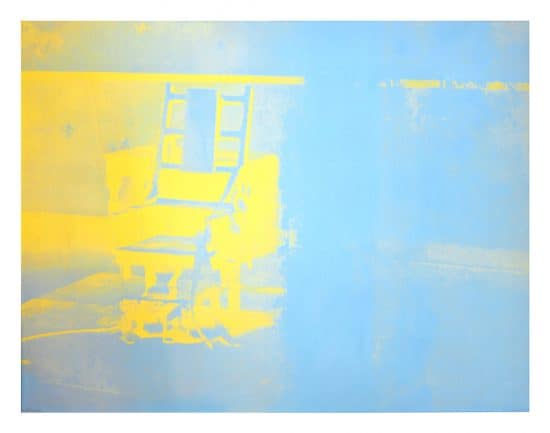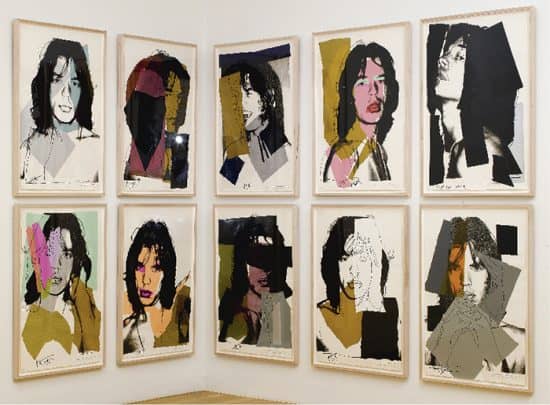Richard Ziegler was an American artist born in North Bergen, New Jersey in 1946. He studied at the School of Visual Arts in New York City and became involved in the avant-garde art scene of the 1960s. He was particularly drawn to the work of Andy Warhol, who was also a prominent figure in the art world at the time.

Ziegler's relationship with Warhol began when he was hired to work as a studio assistant at Warhol's Factory in 1968. The Factory was Warhol's studio and a gathering place for a group of artists, musicians, and other creative people. Ziegler quickly became part of this scene, and he worked closely with Warhol on many projects.
One of Ziegler's most significant contributions to Warhol's work was his involvement in the creation of the "Electric Chair" series. This series featured a series of paintings and prints that depicted the electric chair, a symbol of death and violence. Ziegler helped Warhol create the images by using a special technique to transfer photographs onto canvas. The resulting images were stark and haunting, and they captured the public's fascination with the darker aspects of American culture.

Ziegler also played a significant role in the creation of the Mick Jagger prints, which were produced in collaboration with Jagger and Warhol in the early 1970s. Jagger was interested in collaborating with Warhol on a series of prints, and Ziegler played a crucial role in bringing this collaboration to fruition.
Ziegler worked closely with Jagger and Warhol to create a series of prints that featured images of Jagger. These prints were created using a technique known as silkscreen printing, which involves transferring an image onto a surface through a mesh screen. Ziegler was responsible for preparing the screens and mixing the colors for the prints. He also worked closely with Jagger and Warhol to select the images that would be used in the prints.
The resulting prints were a series of colorful, striking images that captured Jagger's charisma and energy. The prints were sold in limited editions, and they became highly sought after by collectors.
Ziegler's involvement in the Mick Jagger prints was significant because it showcased his expertise in the technique of silkscreen printing. Ziegler had learned this technique while working with Warhol, and he became known for his skill in creating vibrant, eye-catching images using this method.

Ziegler's relationship with Warhol was complicated, as were many of the relationships within the Factory scene. While they worked closely together, Ziegler was also critical of Warhol at times. In a 1971 interview, Ziegler said, "Andy's paintings have always been good, but his films are terrible. They are just boring."
Despite these criticisms, Ziegler remained close to Warhol until Warhol's death in 1987. After Warhol's death, Ziegler continued to work as an artist and was involved in several exhibitions of Warhol's work.
In addition to his work with Warhol and Jagger, Ziegler was a talented artist in his own right. His work explored themes of identity, transformation, and mortality, and it often incorporated elements of pop culture and mass media.
Ziegler's art was exhibited widely in the United States and Europe, and he received numerous awards and accolades throughout his career. He continued to create art until his death in 2013.
In conclusion, Richard Ziegler was an artist who was closely associated with Andy Warhol and the Factory scene of the 1960s and 1970s. He played a significant role in the creation of Warhol's "Electric Chair" series and the Mick Jagger prints, and his expertise in silks.
